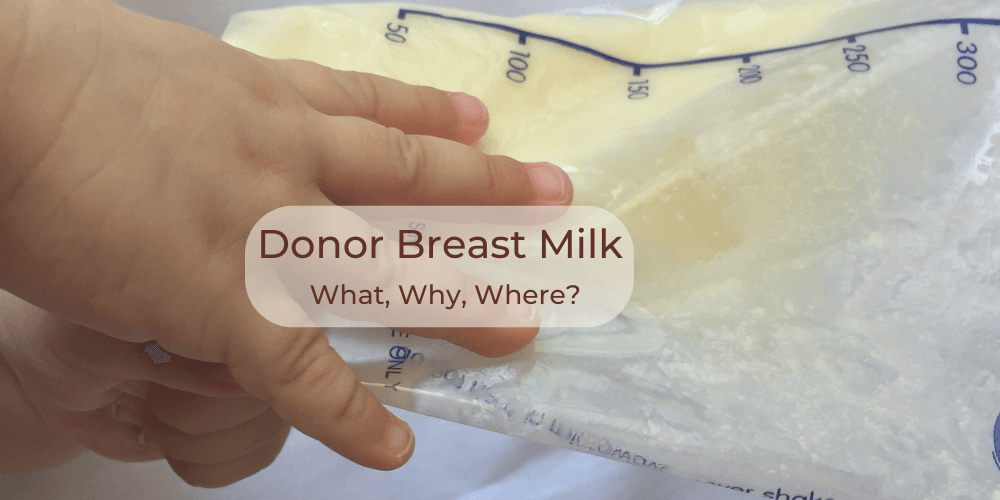Donor breast milk is a current hot topic, especially as parents react to the formula shortage. In today’s blog, we break down the basics of donor breast milk and point you in the right direction if you are looking to donate or are in need.
What is donor milk
Breastfeeding mothers can volunteer to donate their human breast milk to donor milk banks. These banks will collect, screen, process, and distribute the donated milk to individuals with a prescription for human milk. Premature infants may be the primary recipients, but older infants and children, and sometimes, adults will receive this milk.
Who donates
There are a variety of different reasons that a woman may donate her breastmilk. She may have an abundant supply that has led to a deep freezer stash that her baby won’t need, an oversupply that allows her to donate frequently, or sadly experienced a loss and is choosing to donate her milk in honor of her baby. There are other reasons but these are a common few.
Benefits
The benefits of receiving donor breast milk are many, such as easy digestibility and natural immune response to help protect against diseases.
Donor milk may be prescribed for a number of uses, such as prematurity, failure to thrive (grow/gain weight), feeding intolerances, malabsorption syndromes, renal failure, post-surgical nutrition, treatment for infectious diseases, immunodeficiency diseases, and more.
Safety
Before donor milk is received, the mother donating is screened for health behaviors and tested for transmissible diseases. Once approved and their milk is received, it is treated with heat to destroy bacteria and viruses.
“Heat treatment of human milk diminishes anti-infective properties, cellular components, growth factors, and nutrients. However, the beneficial effects of donor milk remain significant and donor milk is still highly preferable in comparison to formula.”
Professor Nadja Haiden, MD, Msc, Human Milk: Lessons from Recent Research
Before the donor milk is dispensed, it is ensured that there is no bacterial growth. Once treated, the human milk is frozen until needed. These precautions make donor milk banking a very safe and incredible option for babies in need.
How to donate
If you are interested in donating human milk, thank you! In order to be considered, you must be in good health, not be at risk for transmission of blood-borne disease, have a milk supply in excess of your own infant’s needs, and be able to collect and donate according to the milk banks’ collection protocols. It is important to note that there is no payment for donating milk – it is a complete contribution.
You can find a list of milk banks, and more information by visiting Human Milk Banking Association of North America (HMBANA) and clicking “find a milk bank” in the footer.
How to receive
Most milk banks require a prescription from your doctor to receive donated breast milk. You can speak to your doctor, and reach out to a local milk bank by following the link above, to learn about their individual requirements.
It is recommended that you avoid taking donated milk directly from another person or through an unaccredited source. Without donated breast milk being properly screened and treated, you run the risk of exposing your baby to bacterial contamination or transmissible viruses like HIV or hepatitis. Even if the informal donor is someone you know and trust, it is 100% safest to choose a source that has screened and treated the breast milk they are supplying.
Whether you plan to donate, or are in need, we hope this information was a helpful start to exploring your options. If you have any experience with donating or receiving donor milk, please comment and share with us!




